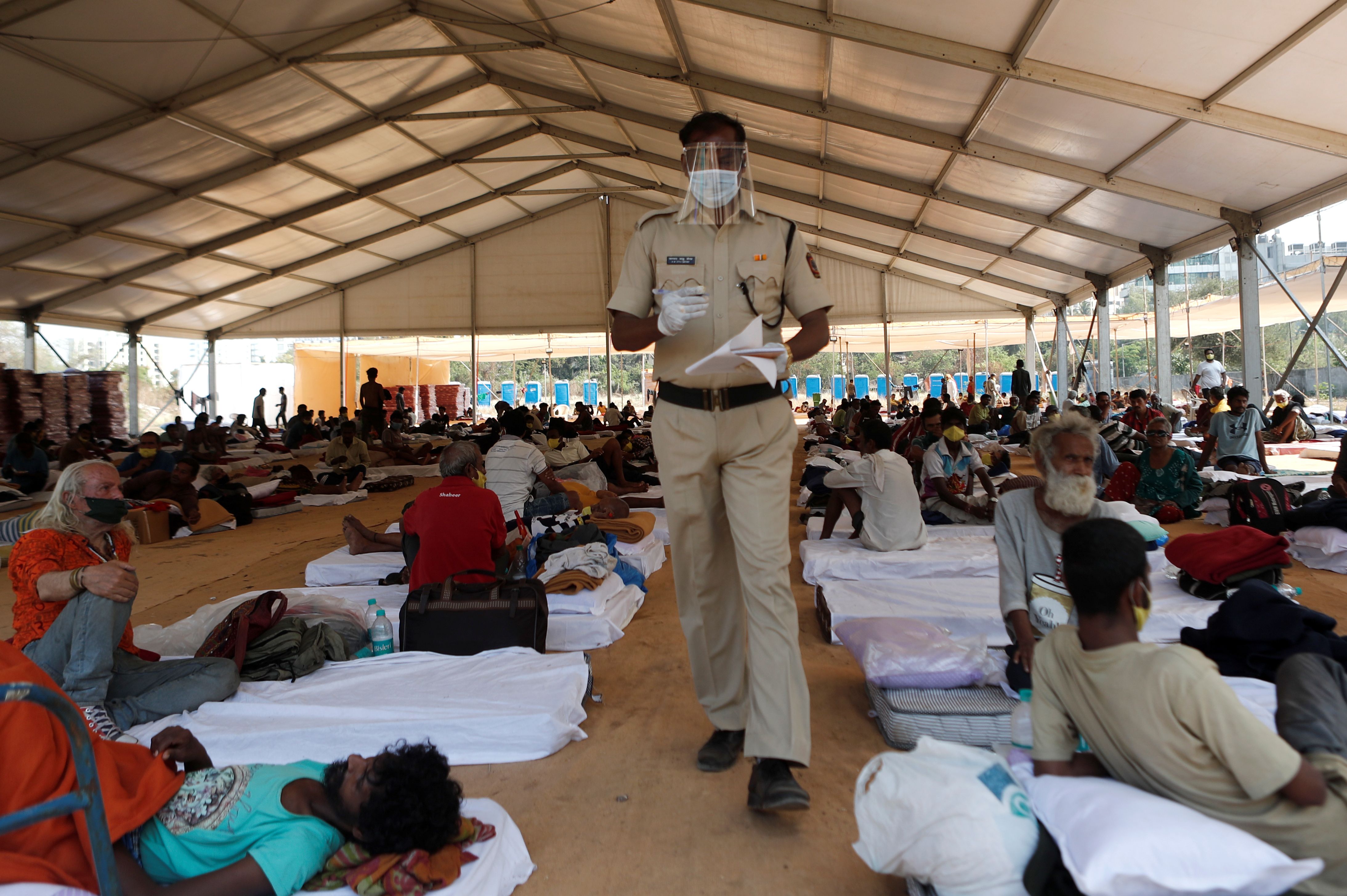
The Scale of the Threat
According to data from the World Health Organisation (WHO), as of 5 April, there were 1,136,000 confirmed cases of SARS-CoV-2 infections (and over 62,000 confirmed deaths) in 209 countries and territories. While cases of COVID-19, the disease caused by the virus, are still rapidly increasing in Europe and the United States, developing countries (those with GDP per capita below $12,765) on other continents where most of the world's population lives have reported far fewer cases. Officially, the worst situation is in Latin America (28,900 infected, 953 dead), and the best in Sub-Saharan Africa (6,400 cases and 236 fatalities). However, the least developed countries (LDC, GDP per capita below $1,025), mainly in Africa, may soon be the most affected by the pandemic.
There may be several reasons for the current low number of infections detected in developing countries. According to some scientists, higher temperatures and lower humidity may be a barrier to the spread of the virus. The populations of the countries of the Global South are also usually very young (with an average age of less than 30), and therefore the majority of those infected are likely to experience milder symptoms in most cases and less mortality than other age groups.
However, the most likely explanation for the small number of patients is poor virus detection due to the low number of tests performed and low accessibility to healthcare. This means that the actual scale of the phenomenon is certainly much higher than shown by official statistics. The virus reached these regions, often off the beaten path of major trade and transport routes, delayed by several weeks, so most of them have the worst yet to come.
Preparations for the Pandemic
Countries that have not yet recorded mass infections have similar preparations for a pandemic. From the beginning of March, governments in Asia and Africa first tried to prevent the virus from being brought in from abroad. The airports introduced body temperature tests for travellers arriving in the country, implemented gradual entry bans for citizens of high-risk countries, and finally cancelled most international flights and closed borders. Then the focuses shifted to reducing local transmission by promoting self-isolation and social distancing, gradually closing schools, banning public assembly, and so on. However, few countries (including, for example, India, Nigeria and Kenya) decided to implement total national lockdowns, fearing that more people could die because of the results of such action than of coronavirus.
However, these countries’ vulnerability is aggravated by factors increasing the risk of spreading the virus, such as high population density, high poverty in many countries, and the poor condition of water and sanitation infrastructure, which makes it difficult to maintain proper hygiene. This is especially true of urban slums or refugee camps. It is developing countries that host 85% of the world’s 26 million refugees and most of the 42 million internally displaced persons. Maintaining social distance can be also complicated by cultural norms or multi-generational family structure.
An effective response to the epidemic is further constrained by low expenditure on healthcare and poor quality medical systems. Figures suggest the availability of hospital beds and medical staff is several dozen times lower than in the EU. There is a lack of tests, laboratories, respirators, protective clothing, and so on. While these countries can draw on experience gained during the effective eradication of previous epidemics (Ebola in West Africa in 2013 to 2016 and in DR Congo until 2019, and SARS in Asia in 2003 to 2004), the number of victims may be higher than in Europe in the event of the dynamic development of the disease.
Economic Disaster
Even if there is no outbreak in many countries, they will all be more severely affected by the economic consequences of the pandemic. The fall in demand in China and industrialised countries is already diminishing basic sources of income for developing economies, hitting the sale of raw materials, the export of low-processed products, remittances from migrants and revenues from tourism. Foreign investors are already withdrawing capital from emerging markets, and will further reduce investment in a developing world that already received only a small proportion of global flows anyway (for example, only 3.5% of total foreign investment flowed into Africa in 2018). The global recession will cause a crisis in developing countries, aggravating the current problems caused by counteracting the epidemic.
Workers in the Global South cannot, unlike those in the West, count on a social safety net, unemployment benefits, or subsidies to maintain jobs, which are mostly in informal sectors. Limiting economic activity and "closing" countries means the loss of livelihood for employees, bringing the risk not only of unemployment but also hunger and death. In the long run, this will stop the progress of recent decades in combating global poverty, and reduce the chance of achieving the Sustainable Development Goals by 2030, as agreed globally in 2015. It will also further constrain already modest national resources for health protection and the fight against COVID-19.
That is why international organisations have already launched additional assistance for the poorest countries. WHO allocated over $675 million in January to support preparations for virus development. The World Bank allocated $14 billion on 17 March, for health protection, support for economies and job protection in developing countries, and the Asian Development Bank announced on 18 March assistance worth $6.5 billion for Asian members. The UN called for $2 billion on 25 March, for a COVID-19 solidarity fund for humanitarian aid in connection with the pandemic. On 26 March, the European Council promised to increase "international cooperation and multilateral solutions to fighting the pandemic" in third countries, and the U.S. has already donated $274 million for this purpose.
Conclusions and Recommendations
The COVID-19 outbreak in developing countries can result in a very serious humanitarian crisis. There is an immediate need to increase international assistance to these countries, helping them to limit the spread of the disease and strengthening their health systems. Particular attention should be paid to supporting refugees in camps around the world. It will also be necessary to strengthen the least developed countries in minimising the economic effects of the pandemic, as the fallout may in many cases cause more casualties than COVID-19 alone.
Likely, highly developed countries that are fighting the pandemic on their own soil will be tempted to cut spending on development assistance now, when it is most needed. Therefore, challenges related to combating the effects of the pandemic should lead the governments of the richest countries to adopt extraordinary and radical solutions. G20 members may consider cancelling or reducing the debts of the least-developed countries. The current situation is also the best opportunity to solve the problem of tax avoidance and tax evasion from developing countries by international companies, which causes these countries to lose at least $160 billion annually (more than the total value of all development assistance received). Moreover, the idea of the International Monetary Fund releasing hundreds of billions of dollars more specifically to support the poorest countries in the fight against the pandemic also needs consideration. The issuance (for the fourth time in history) of special drawing rights (SDRs, which are a unit of account used as foreign reserve assets) would serve this purpose.
The difficult situation in the U.S. and EU countries related to the COVID-19 pandemic should not serve as justification for limiting development and humanitarian aid to developing countries. Solidarity now with the Global South would be in the interests and for the security of Europe and the United States. First, the virus is a truly global threat; if it develops on other continents, wealthy countries may be hit by another wave of infections in the future. Second, the gap in international aid may be exploited by global competitors, such as China, using help in fighting the pandemic to expand their influence in the world.




